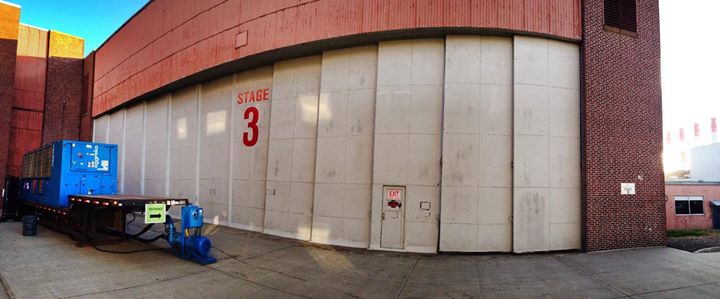- Home
- TV History
- Network Studios History
- Cameras
- Archives
- Viewseum
- About / Comments
Skip to content




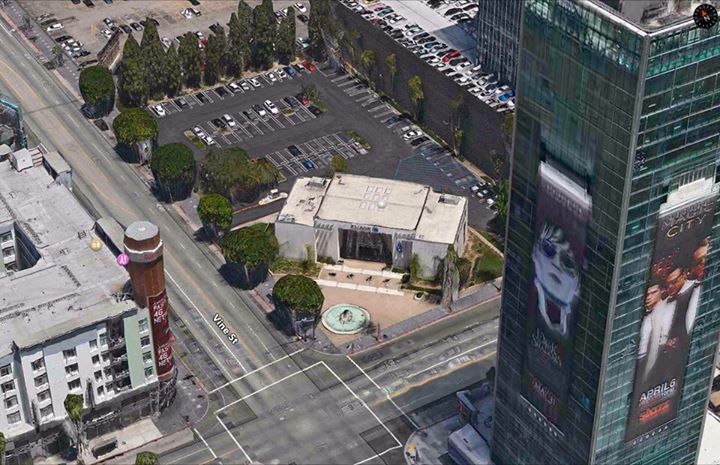

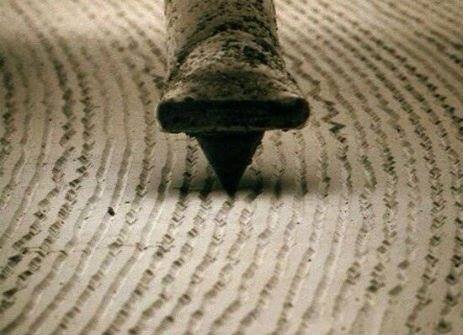





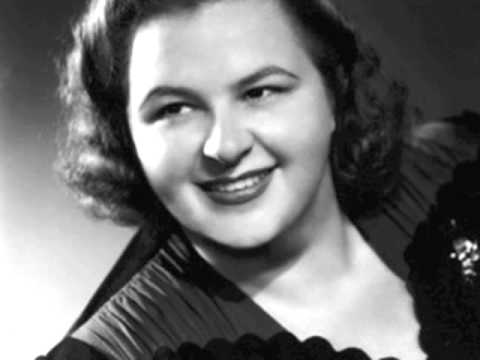

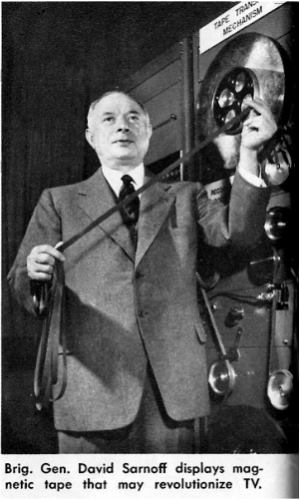
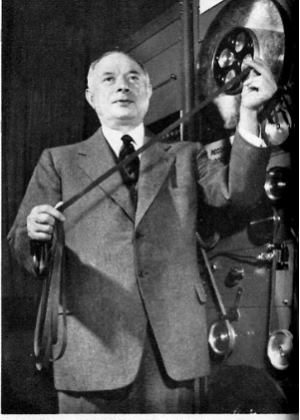






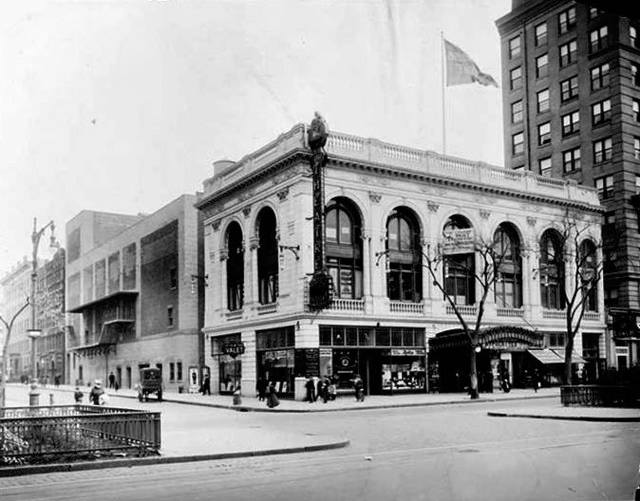

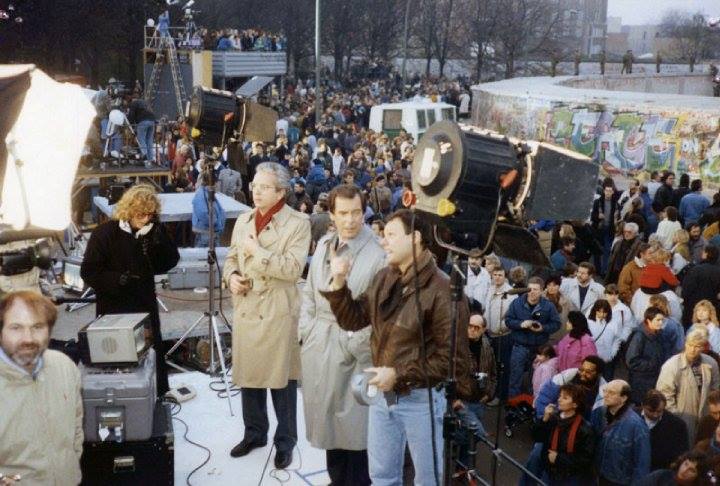

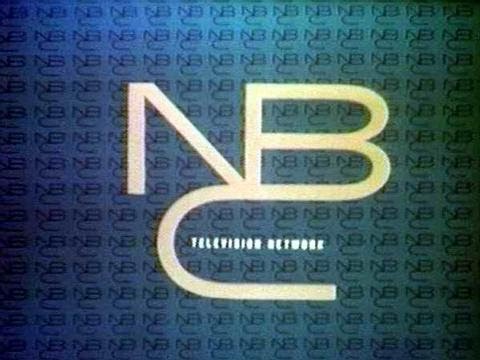





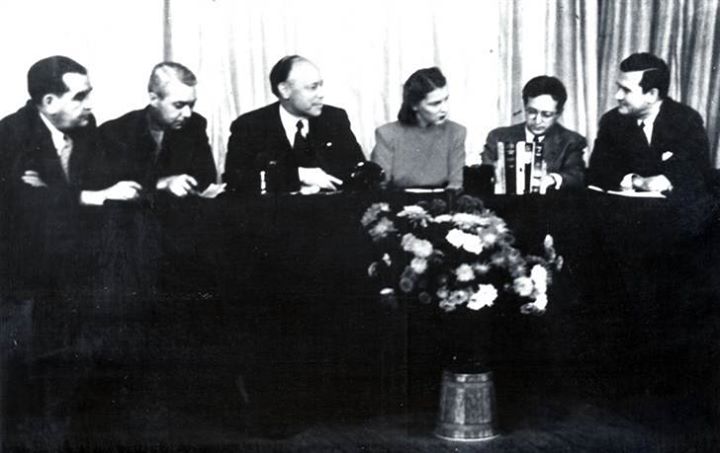

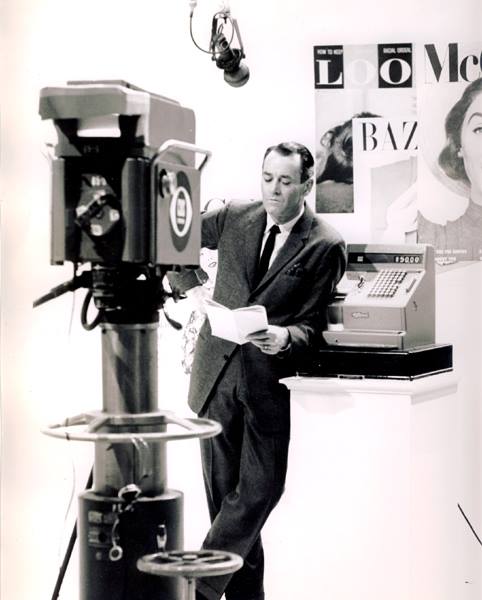

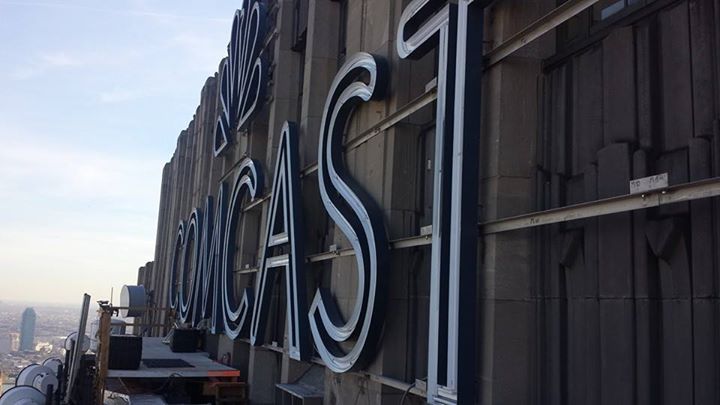

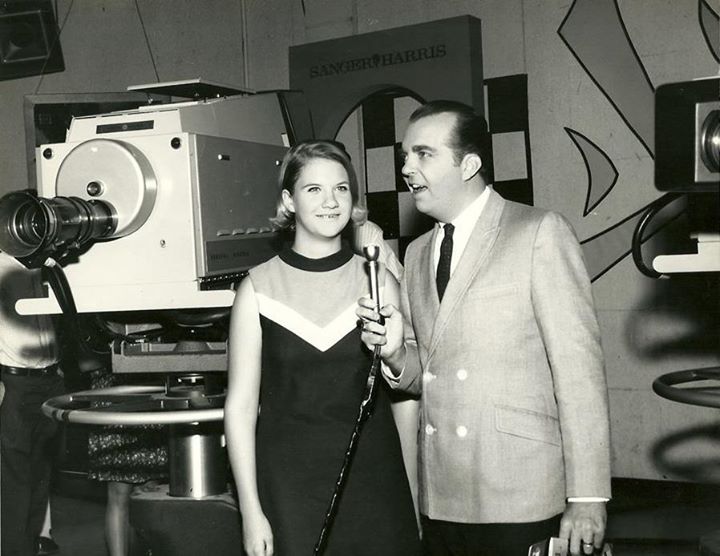

Posts in Category: TV History
Page 49 of 136
« Previous
1
2
3
4
5
6
7
8
9
10
11
12
13
14
15
16
17
18
19
20
21
22
23
24
25
26
27
28
29
30
31
32
33
34
35
36
37
38
39
40
41
42
43
44
45
46
47
48
49
50
51
52
53
54
55
56
57
58
59
60
61
62
63
64
65
66
67
68
69
70
71
72
73
74
75
76
77
78
79
80
81
82
83
84
85
86
87
88
89
90
91
92
93
94
95
96
97
98
99
100
101
102
103
104
105
106
107
108
109
110
111
112
113
114
115
116
117
118
119
120
121
122
123
124
125
126
127
128
129
130
131
132
133
134
135
136
Next » 

The Hidden History of the Zoom Lens
On November 12, 2014
- TV History
The Zoom Lens And Television…The First Uses
Many have asked what the first use of the zoom lens was in television and here is your answer. It was the long, 23 element Zoomar Field lens created by Dr. Frank Back. This 3 minute video gives us a short but sweet history.
The first ever Zoomar lens for television, Serial #1, was sold to WMAR in Baltimore in 1949. WBKB in Chicago heard about this and bought one to use on their new puppet show…’Kukla, Fran and Ollie’. Although it was a long lens, meant for outside broadcasts, WBKB used it in the studio and became the first to do so. When KFO moved from WBKB to NBC’s WMAQ, a Zoomar was purchased for use on the show at WMAQ too. Up next, the first electronic zoom lens for television. Enjoy and share! -Bobby Ellerbee
The Hidden History of the Zoom Lens
This is a video summarising the research behind my doctoral thesis on the history of the zoom lens in American film and television. It was made in response to the…
Long Forgotten Production Tricks…
On November 12, 2014
- TV History
Long Forgotten Production Tricks…
Back in the early days of television, most local stations didn’t have the money for expensive “extras” like pedestals and dollies. Instead, they mounted cameras on wheeled tripods that they could use in the studio or in their remote unit, if they had one.
Among the early staples of local daytime television were home and cooking shows. Since you can’t elevate a tripod to see the top of the counter or stove, overhead mirror systems like this were used.
I am told there were larger versions of this mirror system in use when broadcasting another staple of early local programming…wrestling. Anyone have any more old tricks up their sleeve?
By the way, this is KOTV in Tulsa in 1953. They may not have had pedestals, but the did spring for an RCA Electa Zoom lens. More on zoom lenses in today’s next few posts. Enjoy and share! -Bobby Ellerbee
NBC Radio City West…Now And Then
On November 12, 2014
- TV History
NBC Radio City West…Now And Then
In 1938, construction began on NBC’s west coast showplace at Sunset and Vine Streets in Hollywood. A scant twenty six years later, it was torn down and replaced by a Home Savings bank. It’s now a Chase bank.
Taking it’s cue from homebase at Radio City in New York, it was named NBC Radio City West, but in actuality, the entire two block area around it was in itself “radio city”. On the other side of Vine Street and less than a block up was ABC and a block away, on the same side of the Sunset was CBS Columbia Square.
Thanks to Glenn Mack for sharing the present day photos and there is more detail on the photos, so be sure and click through them. By the way, the building was a beautiful pale green. Enjoy and share! -Bobby Ellerbee
Up Close And Personal…Vinyl Records Like We’ve Never Seen Them
On November 12, 2014
- TV History
Up Close And Personal…Vinyl Records Like We’ve Never Seen Them
It still amazes me that when you put a record on the turntable and place the tone arm on it, you get sound. These are electron microscope photos at 100X and 1000X magnification. I thought you might be as fascinated by these as I was. Enjoy and share! -Bobby Ellerbee


‘Peter Pan’…ULTRA RARE! Two 1955 & One ’56 Kinescope Scenes!
On November 11, 2014
- TV History
‘Peter Pan’…ULTRA RARE! Two 1955 & One ’56 Kinescope Scenes!
Make sure you open this article to see it all and the links to all three clips! I didn’t know any parts survived till now, so this was a big surprise and a real treat!
On March 7, 1955, NBC did the first live broadcast of ‘Peter Pan’ in a ‘Producer’s Showcase’ color special from NBC Brooklyn. It was such a hit that they did it again live on January 9, 1956. Like the first, it too was in color from Brooklyn with the entire Broadway cast returning for the television adaptation, starring Mary Martin as Peter Pan, Cyril Richard as Captain Hook and Sondra Lee as the incongruously blonde Indian princess Tiger Lily.
https://www.youtube.com/watch?v=wb66Sw0C9Ss
This is the first of two rare clips and is the closing scene of the original 1955 broadcast. This has part of “I’m Flying” and Mary Martin’s closing tag and the credits, which you can barely see.
https://www.youtube.com/watch?v=s_UV1CA5FUU
This is the 1955 production with Sondra Lee as the indian princes in the “Ugg-a-Wugg” number.
https://www.youtube.com/watch?v=_i5jzQDyXLI
This is the 1956 show open, cast credits and VO and also shows us the ending with the entire “I’m Flying” scene.
This was done in both studios…I and II (this is the way NBC memos always referred to them, not at 1 and 2, but I and II). I was the larger studio with 11,000 square feet, but it only had a 24 foot clearance from the floor to the grid. Studio II was the taller and had a 39 foot clearance and 9,700 square feet. I think the “I’m Flying” bedroom scenes were all (’55, ’56 and ”60) done in Studio II with it’s higher clearance. Enjoy and SHARE! -Bobby Ellerbee
Peter Pan – Mary’s “Thank You” Tag
This clip is a kinescope of the last few minutes of the LIVE broadcast from 1955, with an “enhancement” created by me!
‘Peter Pan Live’…Camera Rehearsals Start Tomorrow…
On November 11, 2014
- TV History
‘Peter Pan Live’…Camera Rehearsals Start Tomorrow…
Our friends Rob Balton, Tore Liva and Charlie Huntley are among the 14 or so camera operators that started work yesterday at The Grumman Studios in Bethpage, New York, about 25 miles outside NYC. This is the same site used for last years NBC live presentation of ‘The Sound Of Music’.
Rob has two of his Techno Jibs there and there may be two more. There will be three Steadicams, four hand helds on wheels and at least two pedestal cameras spread between two studios. One is for the pirate ship set, the other for the main interiors.
Rob posted a photo of Stage 3 so I assume that will be the main stage which is a staggering 37,000 square feet. If they use Stage 2 for the pirate ship, they will have another 14,000 square feet to work with. Can you say gargantuan?
Yesterday was spent reading the “bible” and today, the cameramen will watch rehearsals, which have been going on for several weeks, and I’ll have some great footage of that in today’s next post. To all of the cast and crew…break a leg and keep us posted! Enjoy and share! -Bobby Ellerbee


November 10, 1938…First Ever Performance, “God Bless America”
On November 11, 2014
- TV History
November 10, 1938…First Ever Performance, “God Bless America”
Irving Berlin had originally written the song in 1918 while serving in the U.S. Army at Camp Upton in Yaphank, New York, but decided that it did not fit in a USO type revue called ‘Yip Yip Yaphank’, so he set it aside. In 1938, with the rise of Hitler, Berlin, who was Jewish, and a first-generation European immigrant, felt it was time to revive it as a “peace song”, and it was introduced on the Armistice Eve broadcast of ‘The Kate Smith Hour’ November 10, 1938. Kate Smith was the fist to sing it and this is a recording of that first ever public performance as broadcast on her CBS Radio show.
Turn it up and listen. If you are like me, you may have to wipe a tear from your eye afterward. I have also included a version of the song that is a recreation of the radio debut in the 1943 movie, ‘This Is The Army’ and you’ll see Ronald Reagan near the end. Enjoy and Share! -Bobby Ellerbee
https://www.youtube.com/watch?v=rEJo7x9y3D4 Film recreation
https://www.youtube.com/watch?v=b1rKQReqJZg Original radio
“This is the original FIRST broadcast radio performance of God Bless America by Irving Berlin as introduced by Kate Smith on November 10, 1938. She later rec…


A FANTASTIC HISTORY OF AUDIO AND VIDEO TAPE!
On November 11, 2014
- Archives, TV History
This is a must read for anyone interested in the early days of audio and video recording! While researching today’s story on the first demonstration of videotape, I happened to find this gem…it’s from The American Heritage series on Invention and Technology.
This seven page article is as good as it gets and is more detailed than anything on the subject that I have seen anywhere! Bookmark, read, save and SHARE this! Enjoy! -Bobby Ellerbee
The Race To Video
A Rarity…The Ampex/ABC Hand Held Cameras
On November 10, 2014
- TV History
A Rarity…The Ampex/ABC Hand Held Cameras
This was developed by Ampex for ABC Sports with ABC paying the developmental costs. There were two versions, but I think both looked just alike. One version had the BC100 color camera teamed with the VR 3000 videotape recorder in the backpack and the other backpack had a transmitter in the VR 3000 case for wireless use.
According to our friend Don “Peaches” Langford, who was one of the first to use this, it was first seen at Pebble Beach for the ABC Bing Crosby golf tour. From there, they went to the ’68 Winter Olympics in France then to Mexico City for the Summer Olympics. Don used it on ABC college football and then again in Miami where he used it at the national political convictions which were both held there in ’68.
The BC 100 camera used two tubes, one tube had a spinning wheel with red and blue filters, the other tube was green and it was also used for luminance. Don carried a Pepsi can in the case so the video man could paint it to the colors of the can he had at the console. It used a very long wound “piano wire” for the delay. Enjoy and share! -Bobby Ellerbee


The 1963 RCA Camera Catalog…All 109 Pages
On November 10, 2014
- Archives, TV History
Here you’ll see everything from the TK60s and 41s to lenses, pedestals, heads, cranes, lights, control room and telecine gear and more…it’s the whole magilla.
In case you have never visited David Gleason’s American Radio History site, you should! He has almost every broadcast publication ever printed and it’s all readable and searchable. A fantastic resource and a lot of fun to browse. Enjoy and share! -Bobby Ellerbee


NBC Studio 6B…Like You Have Never Seen It
On November 10, 2014
- TV History
This video should start just before a visitor walks into the studio via the sixth floor doors, which is our way of identifying the location. This 1947 ‘Bell Telephone Hour’ radio rehearsal gives us one of the earliest looks at 6B as that we have ever had. Here’s the backstory.
Yes, I said new, but wasn’t 30 Rockefeller Plaza built in 1933? Yes, but it was not completed then. Surprisingly, the 6th and 7th floors sat unfinished and unused for nearly a decade…the elevators didn’t stop there and it was just a big empty space with only load bearing walls and support columns visible from a few work lights.
The short explanation for why it sat empty for so long is, television and war. In 1933, RCA and NBC were experimenting with television and wanted to reserve some space inside their new home for the medium, but progress came slowly and then came the eve of World War II. By 1939, things in Europe were already heated and fighting had started. Although we in the US didn’t enter the war till December of 1941, RCA was busy making radio and radar equipment for the British, and had been since 1939. RCA’s attention was fully focused on military hardware and not so much television.
Reporting war news on radio and producing entertainment shows for distraction had pushed the limits of NBC’s facilities and in 1940, plans were being discussed for the 6th and 7th floor. With an eye to the future, NBC wanted to make sure the big audience studios they needed for radio could be also be used for television.
Both studios were completed in early November of 1941, just weeks before Pearl Harbor. At the link is the NBC story on the building of these two studios. https://eyesofageneration.com/building-studios-6a-and-6b/
By the way, the text with this video is quite good and gives us some details of the show in rehearsal. This was filmed for exhibition in movie theaters as a way to introduce the public to this show which endured for many years on radio and later television. Enjoy and share! -Bobby Ellerbee
November 10, 1969…’Sesame Street’ Debuts on PBS
On November 10, 2014
- TV History
November 10, 1969…’Sesame Street’ Debuts on PBS
At the link is video of the first episode’s open…it’s the first time we meet Big Bird, Bert and Ernie and the human cast. Kermit, Rowlf and other Muppet characters were not new to the public.
Since everyone in the world knows the show, well, almost everyone since it’s now on in 123 countries, we’ll celebrate the 45th season with a look more at the early production side.
In the photos below, we see the original home of the show which was done from the old RKO 81st Street Theater at 2248 Broadway. The theater was owned by Teletape Productions and before this, it had been the home of the first and only CBS color studio on the east coast…Studio 72 which was created in the fall of 1954. The last photo is a shot from the control room of Studio 72 in 1955.
Also shown here is an early cast and crew photo with the Marconi Mark VII color cameras. The color photo of a Mark VII shooting Grover is the one that I now have in my collection…it was Camera 2 and in the closeup, you can see that the dome tally light number is the same. There were six Mark VIIs in use on the show.
Teletape was a remote and studio video production company that merged with Reeves Sound Services in 1974 and became Reeves Teletape. Before that, Reeves had been more of a sound and video post edit company.
According to our friend Dennis Degan, who worked at Reeves Teletape, R/T moved ‘Sesame Street’ production in 1983 from 81st Street to the 55th Street studio, which was formerly WNET-TV’s studio on 9th Ave at 55th Street. They made this move because R/T sold the 81st Street studio. They originally bought it from CBS in 1967 and spent even more to renovate and modernize the building. Sesame Street was produced at 55th Street from 1983 to around 1990, first with R/T, then in 1987 with Unitel Video, as R/T went out of business. Sesame moved to Kaufman-Astoria Studios in 1990 where it has remained to this day. The RKO 81 studio was torn down in 1986. This little history lesson was brought to you by the letter B for Bobby. Enjoy and share! -Bobby Ellerbee
November 9, 1989…The Berlin Wall Opens
On November 9, 2014
- TV History
November 9, 1989…The Berlin Wall Opens: 25 Years Ago Today
On the night of Nov. 9, 1989, thousands of East Berliners streamed through the once-closed border crossings after communist authorities caved in to mounting pressure and relaxed travel restrictions that had prevented their citizens from going to the west for decades. The East Germans erected the wall in 1961, claiming the barrier would protect its population from fascist elements threatening its socialist state. In fact, it was built to keep them from escaping to the west.
Above is the Peter Jennings news clip from the next night, reporting live from Berlin. In the photo are faces our ABC friends should remember…Stu Schutman, Annie Benjamin, Jack Smith, Peter Jennings and Steve Tello. Enjoy and share! -Bobby Ellerbee


November 9, 1965…The Great Blackout Hits The Northeast
On November 9, 2014
- TV History
November 9, 1965…The Great Blackout Hits The Northeast
On this date, 49 years ago, it was lights out in a big way! Were you there? From Ontario, Canada to Connecticut, Massachusetts, New Hampshire, Rhode Island, Vermont, New York, and New Jersey, over 30 million people and 80,000 square miles were left without electricity for up to 13 hours.
The video here has NBC’s Frank McGee, reporting from New York, asking the cameraman using a tiny RCA Walky Looky portable camera, to pan around the studio which was lit by on 2 candles, a Coleman lantern and a battery powered lab light. This was video fed to WRC in Washington where the network had to originate during this time.
I know the video signal was fed there on AT&T lines, and that even when the power goes out, landline phones still work, but with such a large area affected, it’s hard to imagine where the phone companies got enough power to operate…even with emergency generators.
Oddly, the power seemed to go down slowly. WABC’s Dan Ingram recalled the event and playing an air check in which you can hear the records slow down…finally it all stopped at 5:28 PM.
The only good thing about that night was the full moon, which helped a lot of people in the dark. Were you there? Got a story? Thanks to Glenn Mack for reminding me of this. Enjoy and share! -Bobby Ellerbee
The Back 40 Lot: Just Before “Tara” Was Dismantled
On November 8, 2014
- TV History
The 40 acre backlot is the misnomer that was given to what was actually about 29 acres of land in Culver City, California, first used as a movie studio backlot in 1926 by Cecil DeMille, who had leased the property from Achille Casserini in March of 1926.
DeMille’s production company utilized the backlot for numerous silent films, including ‘The King of Kings’ (1927), for which a large Jerusalem temple and town were constructed, ‘The Fighting Eagle’ (1927), ‘Forbidden Woman’ (1927) and ‘The Godless Girl’ (1929).
In 1928, DeMille’s Culver City studio and backlot were acquired by RKO Pictures, whose films there on the backlot included ‘Bird of Paradise’ (1932) and the 1933 classic, ‘King Kong’. In 1937, David Selznick acquired the property in a long-term lease, and used the backlot to re-create a Civil War era Atlanta for his 1939 epic ‘Gone With The Wind’. During the filming of GWTW, leftover sets on the lot, including the King Kong gate were burned to depict the burning of Atlanta.
Under a variety of owners over the next two decades, the backlot appeared in dozens of films, and by the early 1950’s, the lot began to appear in television productions, including ‘The Adventures of Superman’.
Pictured below is in an aerial view from 1958 that shows the Tara set and what would become the Courthouse in ‘The Andy Griffith Show’. Also shown here are two photos of Tara, just before it was dismantled in 1959. As you will see in Part 5, Tara is now in Georgia and we’ll see if for the first time since 1959.
In 1958, the backlot changed ownership from RKO to Desilu Studios. For the next ten years, the backlot would provide outdoor locales for Desilu’s own television productions, as well as for series produced by others.
From 1960 – 1968, ‘The Andy Griffith Show’ exteriors would be shot on a set that was originally constructed for use as the streets of Atlanta for ‘Gone With The Wind’…that was “Mayberry.”
Paramount Pictures eventually bought out Desilu, and in 1968, sold off the Culver City studio facilities. As the studio continued to change hands, the “40 Acres” backlot fell out of use and into disrepair in the early 1970’s, and in 1976 it was bulldozed and the land was sold to industry.
Much of the information and many photos we will see this weekend are from the great Retro Web site which is linked below. There are hundreds of rare photos of the 40 Acres property there and you MUST visit. Many thanks to the site’s creators and it’s contributors for their extraordinary archival work on this subject, and many others. Enjoy and share! -Bobby Ellerbee


Sunday, November 7, 1954…’Face The Nation’ Debuts, CBS
On November 7, 2014
- TV History
Sunday, November 7, 1954…’Face The Nation’ Debuts, CBS
Wait till you see this video of the first ever presentation of ‘Face The Nation’! The first thing you see is a closeup of a camera’s lens turret with a surrounding that is rather confusing…until the shot widens out. Only then do we see that the camera shooting the guest is behind the wall and shooting over the shoulders of the panel.
That first ‘Face The Nation’ guest was Sen. Joe McCarthy and if you listen to him, I think his tone will sound eerily familiar. A few weeks before, he had been on NBC’s ‘Meet The Press’ and brought a gun to the studio. This time, he wasn’t packing heat. Very Tea Party.
In the early days, ‘Face The Nation’ was originally broadcast on Sunday afternoons at 2:30 eastern. The program’s original host was Tedd Koop, then the Washington D.C. bureau chief for CBS News and originated from the network owned WTOP in Washington.
The show as created by the late Frank Stanton, who ran the network in the early days. When asked why he started it, he said simply, “Because NBC had ‘Meet the Press,’ and I thought we needed a program like that.” Enjoy and share! -Bobby Ellerbee
https://www.youtube.com/watch?v=FtVJFBSMXDk
In the first Face the Nation broadcast on television, Sen. Joseph McCarthy responds to questions about his infamous hearings. (CBS NEWS)
Saturday, November 6, 1947…’Meet The Press’ Debuts, NBC
On November 7, 2014
- TV History
Saturday, November 6, 1947…’Meet The Press’ Debuts, NBC
As you’ll see in this and the next post, two of television’s longest running programs debuted this week in history, but they are separated by seven years and a day with ‘Face The Nation’ on CBS debuting on November 7, 1954.
Before the show history, a note on the photos. The one with no cameras is the oldest known photo and is from December 4, 1947 with guest Sen. Robert Taft. The other photos are just as historic as they are of the first ever colorcast of the show and were taken February 14, 1954 at The Colonial Theater in NYC with Sen. John F. Kennedy as the guest. Usually, the show was done at NBC’s WRC in Washington, but came to New York for the special colorcast with the RCA TK40 prototype cameras.
Did you know ‘Meet The Press’ was actually created and started by a woman? Her name was Martha Rountree and she started as a reporter at The Tampa Tribune. Her duties included writing a sports column under the name “M. J. Rountree,” its readers none the wiser as to the sex of the journalist who was, after all, writing in a field dominated by men. A local CBS station was impressed enough by her work that they gave her a chance to write for radio for the first time, after which she headed north to New York, where she wrote ad copy for the medium. But Rountree was not comfortable playing so minor a part of an industry she felt held greater opportunities for her. “I got the ideas, worked them out; other people got the credit,” she lamented. “I wanted to produce myself. To prove that she meant business, she and her sister Ann opened a production firm called Radio House, which prepared transcribed programs and singing commercials.
1945 was Rountree’s banner year. She made her mark on radio in a big way, selling the idea for two different panel shows to the Mutual Radio Network, premiering them a day apart in October. One was ‘Leave It to the Girls’, the other was ‘Meet The Press’ which debuted first on October 5, 1945.
Although frequently credited as a co creation of Rountree and Lawrence E. Spivak, publisher and editor of American Mercury magazine, authoritative sources adamantly state that it was Rountree who developed the premise on her own, with Spivak joining up as co producer and business partner in the enterprise after the show had already debuted. After she left, Spivak became the driving force behind the show.
On November 6, 1947, while still on Mutual Radio, the show came to NBC Television. ‘Meet the Press’ was originally presented on Saturday night at 7:30 as a half hour show with a single guest and a panel of questioners. The first guest was James Farley, who served as Postmaster General, Democratic National Committee chairman and campaign manager to Franklin Delano Roosevelt under the first two terms of the New Deal Administration.
The first host was its creator, Martha Rountree, the program’s only full time female moderator to date. She stepped down on November 1, 1953 and until Ned Brooks could take over, her friend Deena Clark filled in and is seen here in the Kennedy colorcast photos from February 14, 1954.
Rountree was succeeded by Ned Brooks, who remained as moderator until his retirement on December 26, 1965. Spivak became the moderator on January 1, 1966, moving up from his role as a permanent panelist. He retired on November 9, 1975, on a special one-hour edition that featured, for the first time, a sitting president, Gerald Ford, as the guest.
The next week, Bill Monroe, previously a weekly panelist like Spivak took over as moderator and stayed until June 2, 1984. For the next seven and a half years, the program then went through a series of hosts as it struggled in the ratings against ABC’s ‘This Week with David Brinkley’. Roger Mudd and Marvin Kalb (as co-moderators) followed Monroe for a year, followed by Chris Wallace from 1987 to 1988. Garrick Utley hosted ‘Meet the Press’ from 1989 through December 1, 1991 at which time Tim Russert took over and not long after that, the show went to a one hour format.
Rountree died on August 23, 1999, in Washington, where she had made her name as one of the key figures in political reporting. Her successor in the moderator’s seat, Tim Russert, summed up her status in the medium by declaring, “She was a news pioneer who helped create a national treasure, Meet the Press.” Enjoy and share! -Bobby Ellerbee
Classic Photo…’The Fabulous 50s’…A Peabody Award Winning CBS Special
On November 7, 2014
- TV History
Classic Photo…’The Fabulous 50s’…A Peabody Award Winning CBS Special
On January 22, 1960, CBS completed taping of a special two hour look back the the decade that had just passed into history. It aired on January 31. In the photo, we see one of the show’s iconic hosts, Henry Fonda going over his lines in New York. The camera is an RCA TK11 and notice that it is “half racked” to save the IO tube from image burn. That handle on the back of the camera is at an angle which puts the turret over the IO tube opening.
The special not only won viewers and ratings…it won a Peabody Award too and below is the Peabody Museum’s description of the show.
“The Fabulous Fifties from CBS, combines style, humor, and imagination. It was rich in touches of quality showmanship and equally rich in the memories of a decade which it revived. In recognition, the Peabody Television Award for entertainment is presented to The Fabulous Fifties, with a special word of praise for producer Leland Hayward and the top talent which appeared in this memorable entertainment special*. *The two-hour special featured comic takes and commentary about the previous decade by, among others, Rex Harrison and Julie Andrews, Mike Nichols and Elaine May, Dick Van Dyke, Shelley Berman, Betty Comden and Adolph Green, Jackie Gleason, Eric Sevareid and Henry Fonda.”
Enjoy and share! -Bobby Ellerbee
One Side Up…Three More To Go At 30 Rock
On November 7, 2014
- TV History
One Side Up…Three More To Go At 30 Rock
In September the old GE signs at 30 Rock finally came down. Thanks to our friend Alan Coffield, here’s a picture of one side of the building’s new top hat, complete with a peacock logo. Both the north and south sides get this treatment and the east and west faces will get the peacock only…hopefully in color. Enjoy and share! -Bobby Ellerbee
A Rare Sighting…The GE PC 25 Color Camera
On November 6, 2014
- TV History
A Rare Sighting…The GE PC 25 Color Camera
There were not many of these cameras made and I think the total ever built was twenty four. This shot is from WFAA in Dallas with DJ Ron Chapman hosting a local dance show. KGBT in Harlingen, Texas had them too.
Although GE broadcast equipment was built in Syracuse NY, in general it seems the west and south were their best broadcast markets. In a discussion with Pete Fasciano (inventor of the Avid editing system), Pete recalled that GE was so far behind in sales, that had the plumbicon tube not come along when it did, GE may well have gotten out of the broadcast business because without them, they would not have had the 250s, 350s and 400s.
Speaking of Syracuse, WCNY, the PBS station there had them but I think they were donated hand-me-downs from GE owned WRGB in Schenectady, but that’s the only two locations in the northeast that I know of that had these. Thanks to Martin Perry for the picture. Enjoy and share! -Bobby Ellerbee
Page 49 of 136
« Previous
1
2
3
4
5
6
7
8
9
10
11
12
13
14
15
16
17
18
19
20
21
22
23
24
25
26
27
28
29
30
31
32
33
34
35
36
37
38
39
40
41
42
43
44
45
46
47
48
49
50
51
52
53
54
55
56
57
58
59
60
61
62
63
64
65
66
67
68
69
70
71
72
73
74
75
76
77
78
79
80
81
82
83
84
85
86
87
88
89
90
91
92
93
94
95
96
97
98
99
100
101
102
103
104
105
106
107
108
109
110
111
112
113
114
115
116
117
118
119
120
121
122
123
124
125
126
127
128
129
130
131
132
133
134
135
136
Next » 